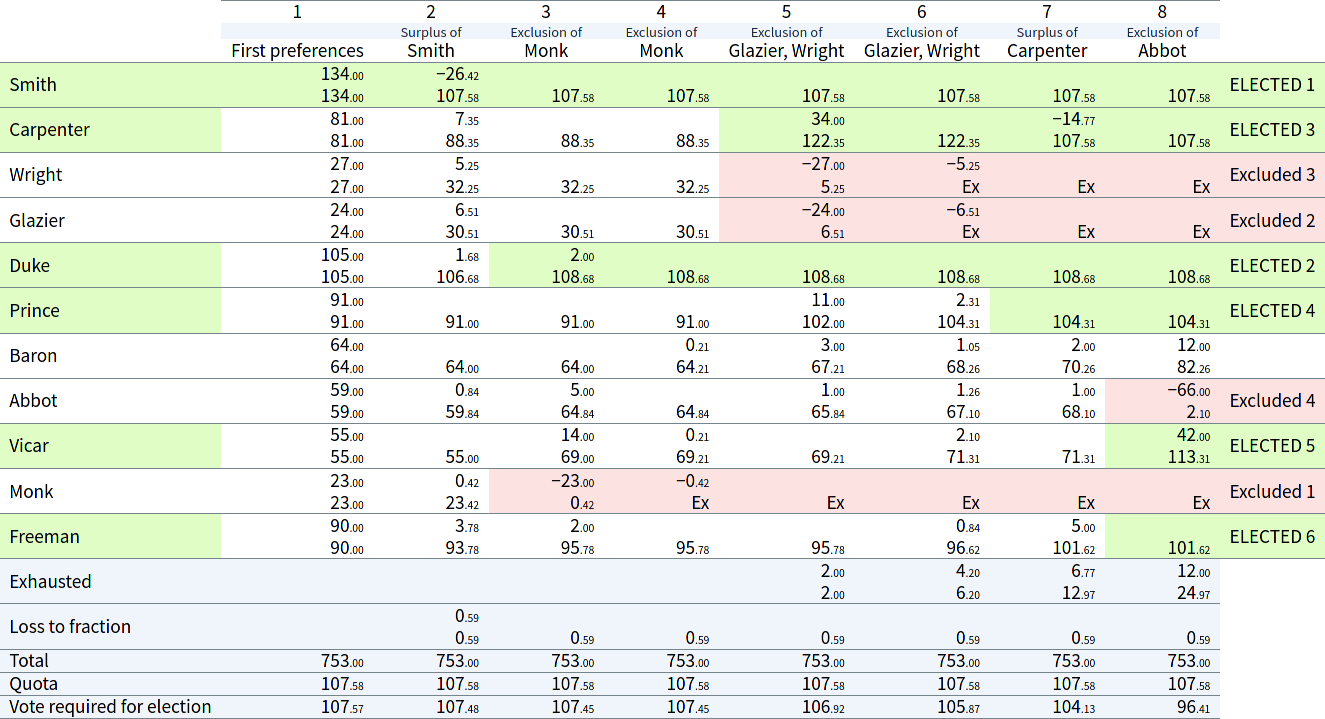Reverse engineered ballot papers for the ERS97 model election
This post has been retracted.
The reverse engineered ballot papers presented in this post do not conform to the more detailed results sheet presented in ERS97. Ballot papers which do conform to that results sheet are included with Joe Otten's eSTV. eSTV version 1.40 may be downloaded here.
The original, retracted, post appears below:
ERS97 refers to the rules for a Single Transferable Vote election set out in the 3rd edition of the Electoral Reform Society's How to conduct an election by the Single Transferable Vote, commonly used in the United Kingdom.
The ERS97 booklet contains a model election for 11 candidates and 6 vacancies, with 753 total valid votes. However, the booklet describes the model election only in a broad-level narrative manner, and reproduces only some of the paperwork of the election. As Brian Wichmann notes in a contemporaneous article in Voting Matters, ‘this means that this single long example cannot be re-worked completely by the reader’.
Using the information that is provided, however, it is possible to reverse engineer most of the relevant preference data. Using information provided in the text and in the few example papers provided, we can reconstruct a count sheet:

In the table, a yellow background indicates the lowest-polling candidate(s). A blank cell indicates that the value cannot be definitively determined from the provided data alone.
Using this count sheet, with a bit of trial and error, we can supply some plausible values for the missing cells (shown in red), rather something like a bizarre Sudoku puzzle:

This is only one possible way of completing the count sheet, and there may be many more consistent with the text of the ERS97 booklet.
Armed with this, we can then construct ballot papers which produce the required count sheet. One such set of ballot papers can be downloaded here: ers97.blt
This BLT file is used as a test case for pyRCV2, and shows that the results do indeed match the ERS97 model election:
